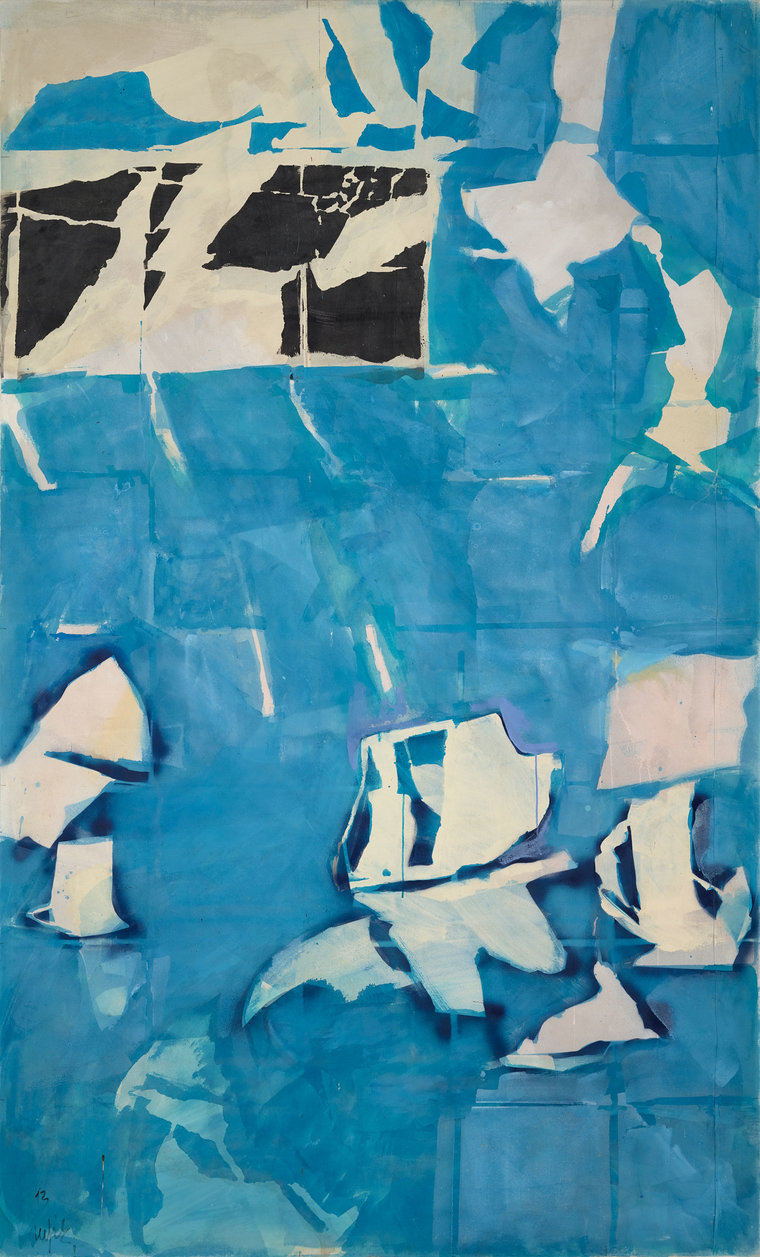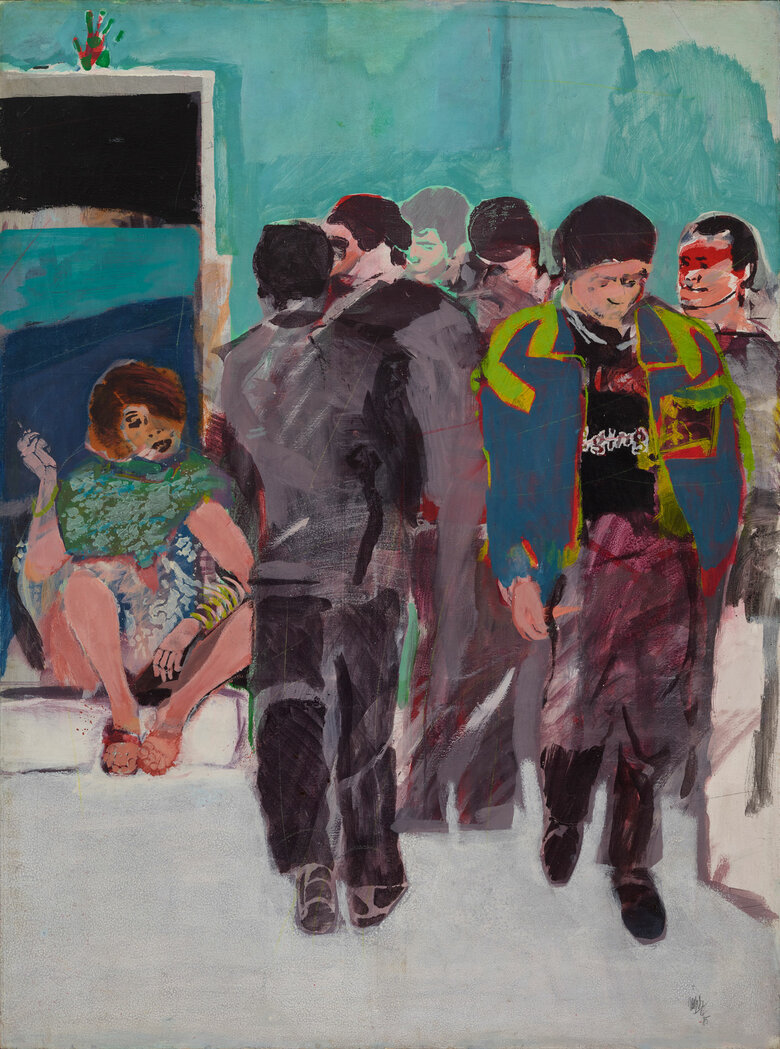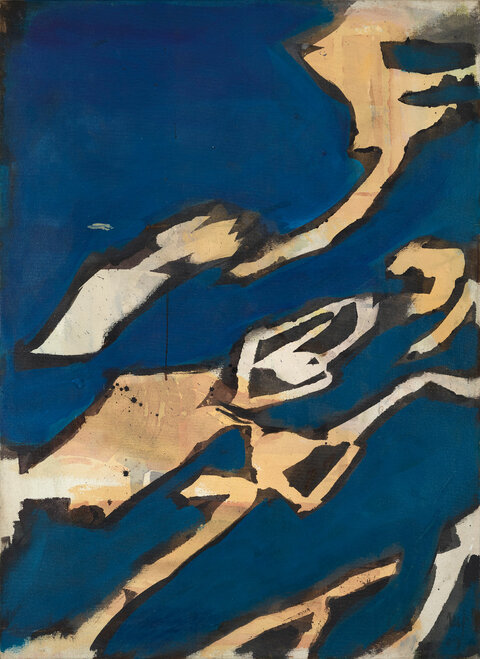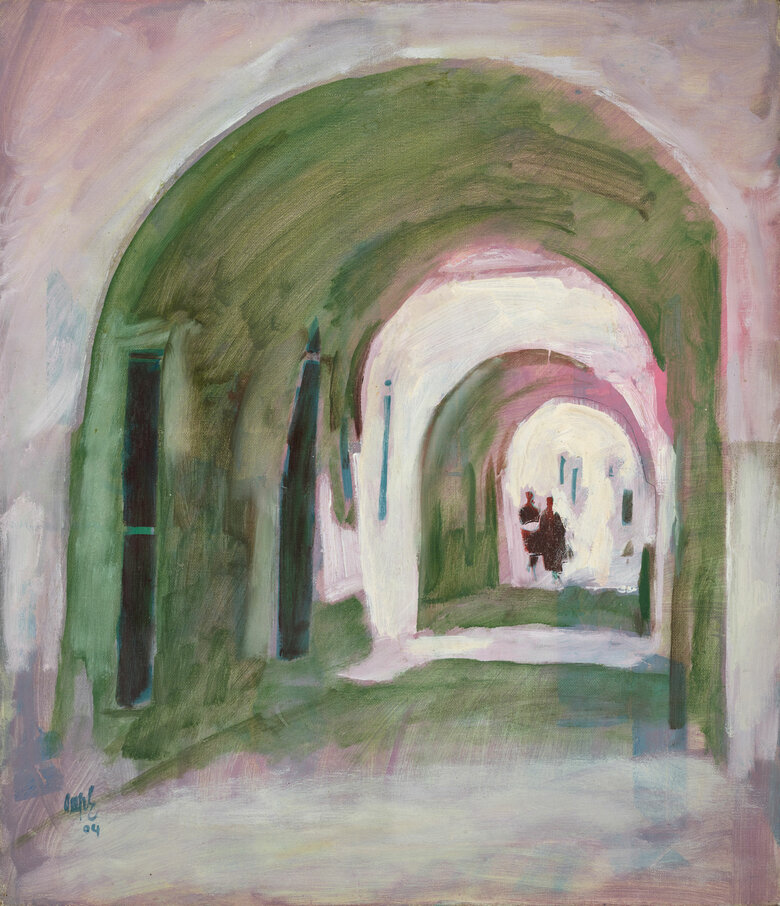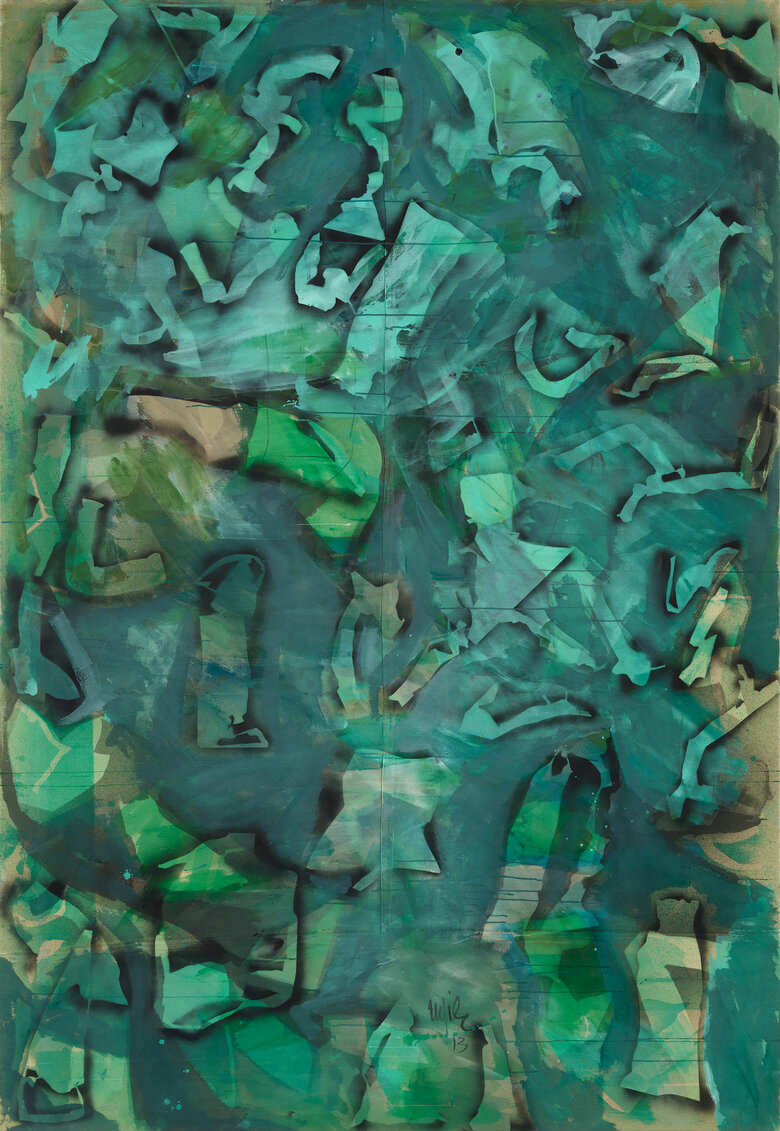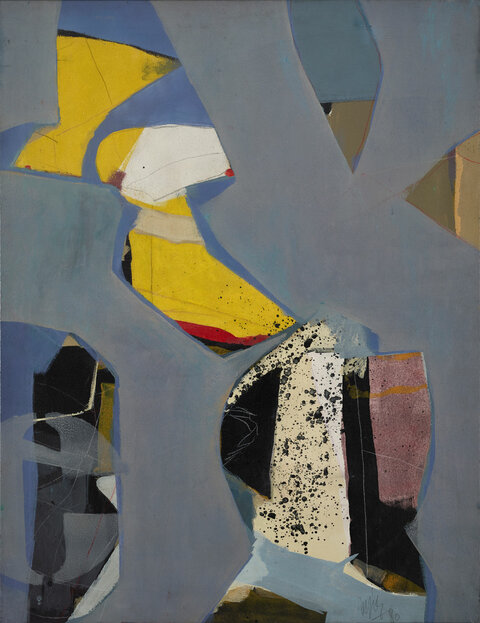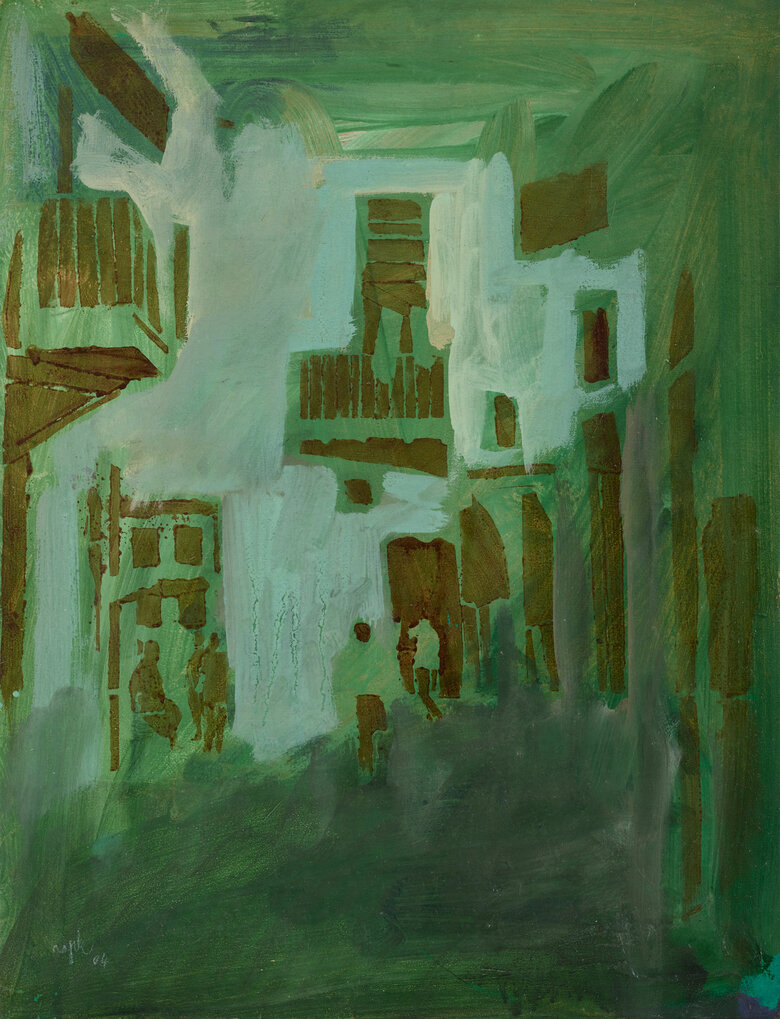Created by Tunisian artist Rafik El Kamel, Untitled, 2013, is a large-scale painting executed with acrylic in different shades of blue, complemented with large masses of white and black shapes. In some ways, the painting depicts the striking colors predominant in the Tunisian village of Nabeul, El Kamel's place of residence, mainly the bright white lime of the houses contrasted against the blues of the Mediterranean.[1] The layering of the diluted blue acrylic paint creates a blotchy effect similar to that of watercolors. It gives the illusion of transparency and turbulence, both characteristic of shimmering water. The distinctly patterned representation of the choppy waters of the sea is accomplished through the division of the canvas into a cartesian grid, whereby the refraction and reflection of light on water diverges across the panels of the grid.
Untitled,2013 exemplifies El Kamel’s intriguing artistic journey as it highlights the contradictory threads that marked his evolution. His early years saw him as a force majeure in the Tunisian art scene, prioritizing abstraction over the then-dominant folkloric tendencies in anti-colonial and post-independence Tunisian art.[2] However, his paintings and collages during the 1980s brought back representational depictions of contemporary daily life in Tunis that are carefully devoid of gratuitous romanticization[3]. El Kamel’s future works continued to evolve to include both approaches while remaining cautious of excessive idealism; instead, like Untitled(2013), his paintings portrayed an authentic appreciation of fleeting moments within his environment.
While El Kamel seems to lean more towards working in the language of abstraction, he does not let it overwhelm his source of inspiration. The objects within this painting are brought to the forefront through their interaction with the horizontal and vertical lines of the grid, which sometimes appear as nothing more than a suggested silhouette. This is emphasized through various moments across the canvas where the objects either have a dark reflection or are surrounded by a delicate tinge of purple. The points at which the colors fade into one another help temper the dissonance between the mathematical language of the grid and the diffusion of starkly contrasted colors and shapes across the broad canvas.
The insular world of Untitled,2013, is reflective of El Kamel’s lifelong aversion to politics and ideological posturing. Despite its size, it does not overwhelm the viewer with mantras and messages of politics, nor does it try to calm the senses (notwithstanding the hues of blue). It is the work of an artist keen on spending his time engrossed in the craft of artmaking till the very end, regardless of the noise outside.[4]
signed and dated '13' front lower right
Sources:
[1]Hassouna El Mesbahi. "تشكيلي تونسي آثر العزلة ليرسم ألوانه الخاصة." Alarab Newspaper, February 22, 2017. Accessed July 20, 2023. https://alarab.co.uk
[2]Jessica" class="redactor-autoparser-object">https://alarab.co.uk/%D8%AA%D8... Gerschultz. "École de Tunis." In The Routledge Encyclopedia of Modernism. Taylor and Francis, 2016. Accessed July 20, 2023. https://www.rem.routledge.com
[3]رفيق الكامل.. رحيل عن لوحته التجريدية, Alarab Newsapaper, March 31, 2021. Accessed July 20, 2023. https://www.alaraby.co.uk
[4]Hassouna El Mesbahi" .تشكيلي تونسي آثر العزلة ليرسم ألوانه الخاصة"

